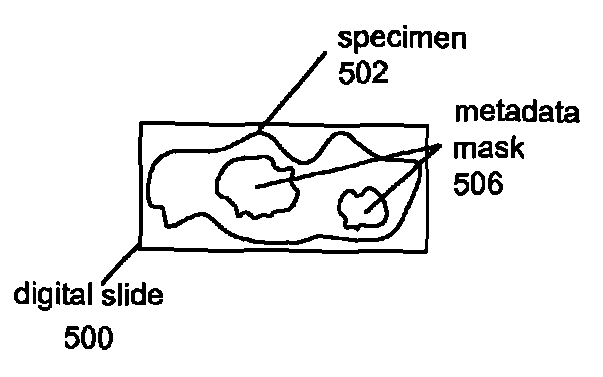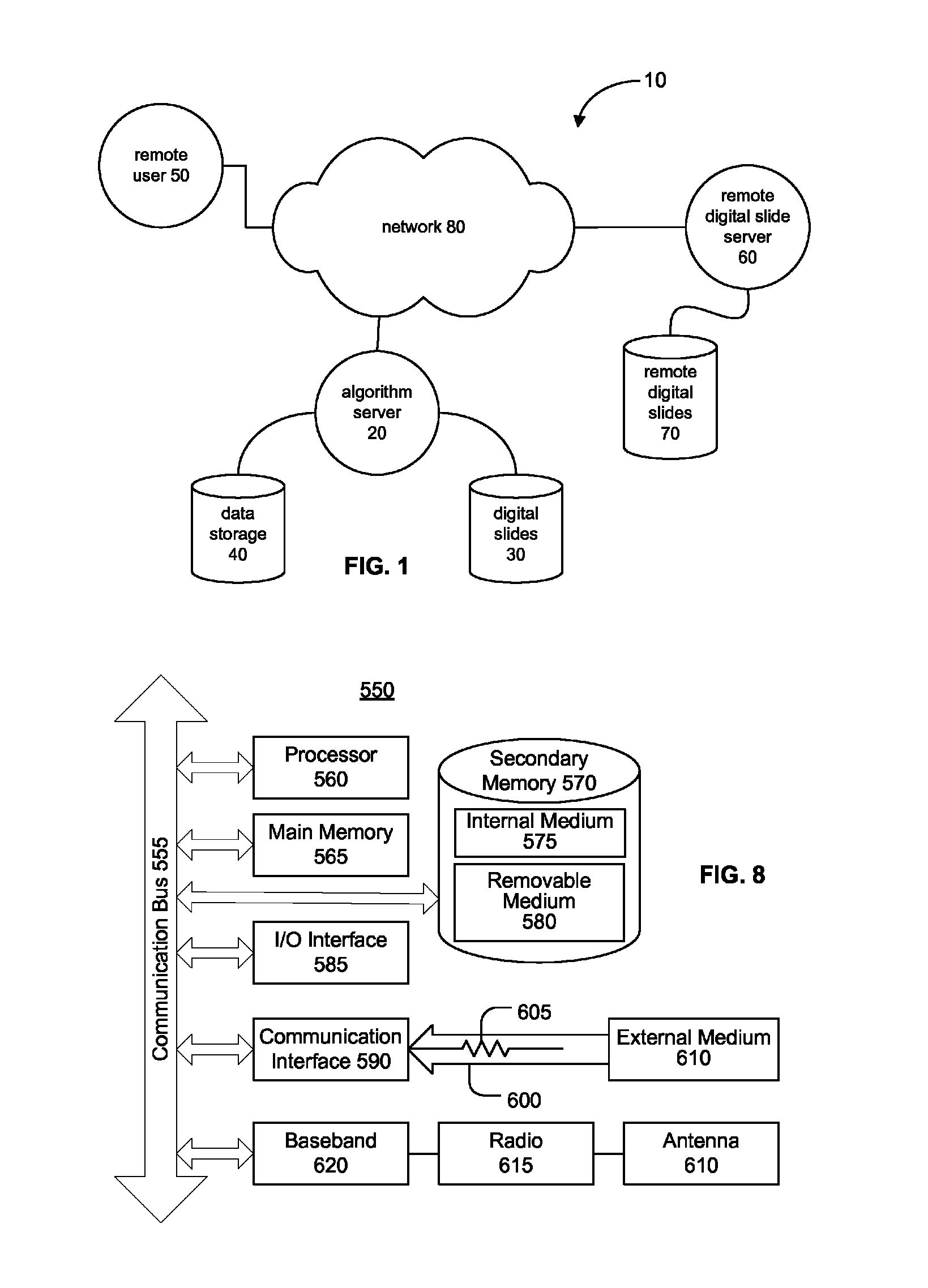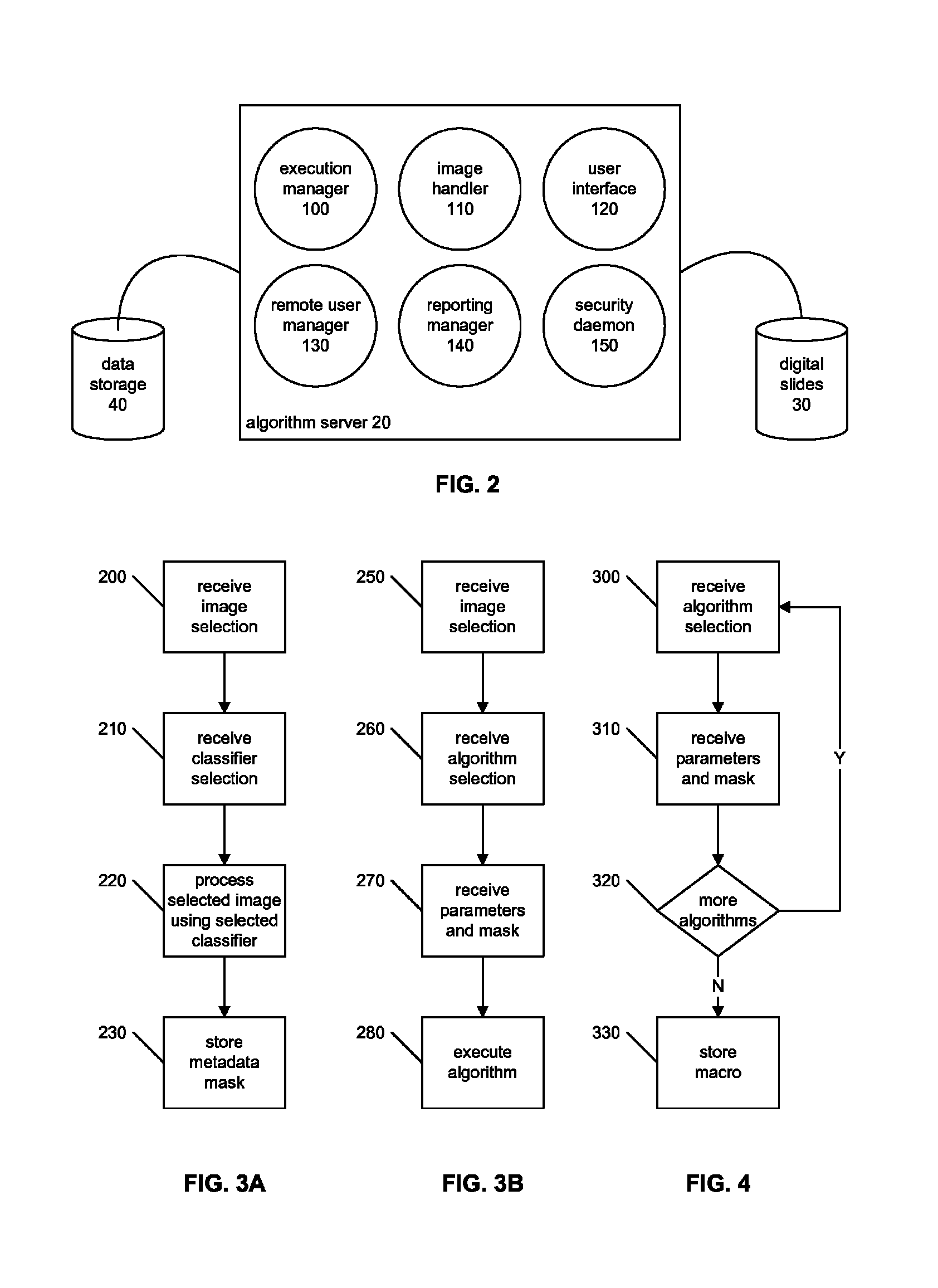Signal to noise ratio in digital pathology image analysis
a digital pathology and image analysis technology, applied in the field of digital microscopy, can solve the problems of undesirable image data, undesirable image data, undesirable image data, etc., and achieve the effect of improving the signal to noise ratio in the digital pathology image analysis
- Summary
- Abstract
- Description
- Claims
- Application Information
AI Technical Summary
Benefits of technology
Problems solved by technology
Method used
Image
Examples
Embodiment Construction
[0017]Certain embodiments as disclosed herein provide a framework for processing and analysis of digital slide images. The system comprises an algorithm server that pre-processes a digital slide image (or portion thereof) using a classifier to create a metadata mask that, when applied to the digital slide image, produces the desired image data with an improved signal to noise ratio. Using the improved signal to noise ratio image data from the digital slide image, the algorithm server executes image processing instructions (referred to herein as “algorithms,”“routines,” and “sub-routines”) to generate an analysis of the desired image data. For example, one method disclosed herein allows a user to identify a digital slide image (or a sub-region thereof), a classifier, and an algorithm to be used in the processing and analysis of the image. The server then applies the classifier to the digital slide image (or sub-region thereof) to generate improves signal to noise ratio image data tha...
PUM
 Login to View More
Login to View More Abstract
Description
Claims
Application Information
 Login to View More
Login to View More - R&D
- Intellectual Property
- Life Sciences
- Materials
- Tech Scout
- Unparalleled Data Quality
- Higher Quality Content
- 60% Fewer Hallucinations
Browse by: Latest US Patents, China's latest patents, Technical Efficacy Thesaurus, Application Domain, Technology Topic, Popular Technical Reports.
© 2025 PatSnap. All rights reserved.Legal|Privacy policy|Modern Slavery Act Transparency Statement|Sitemap|About US| Contact US: help@patsnap.com



